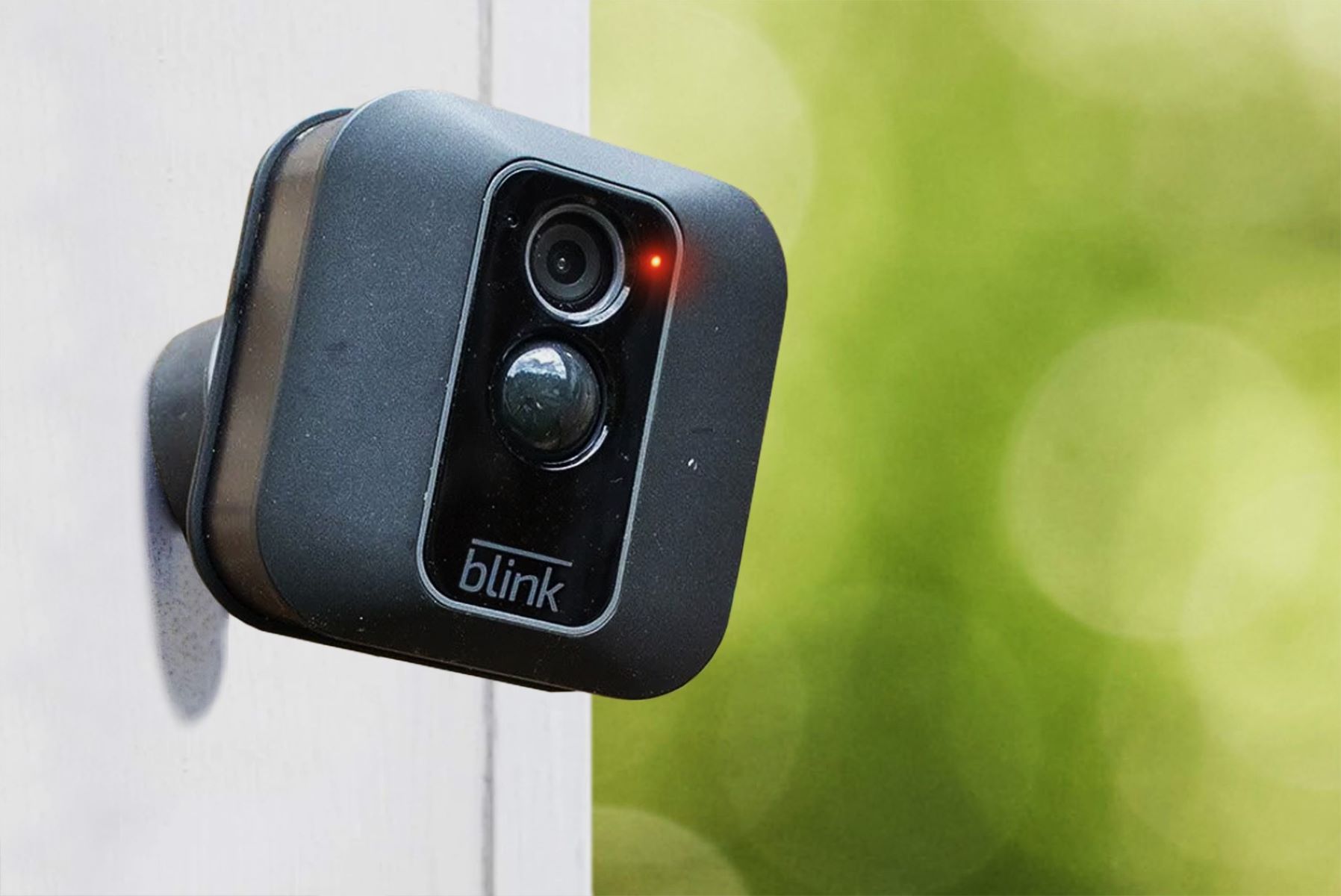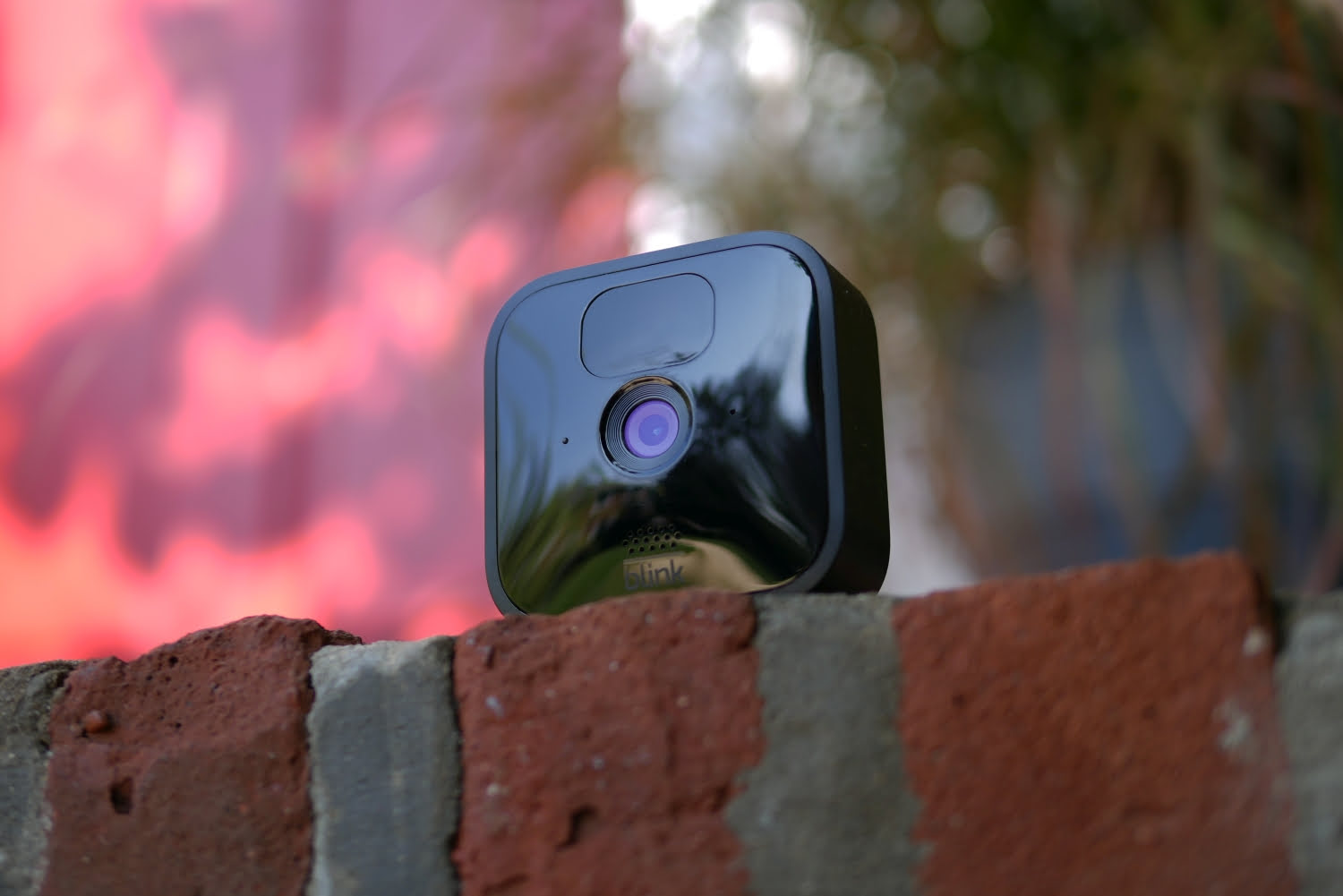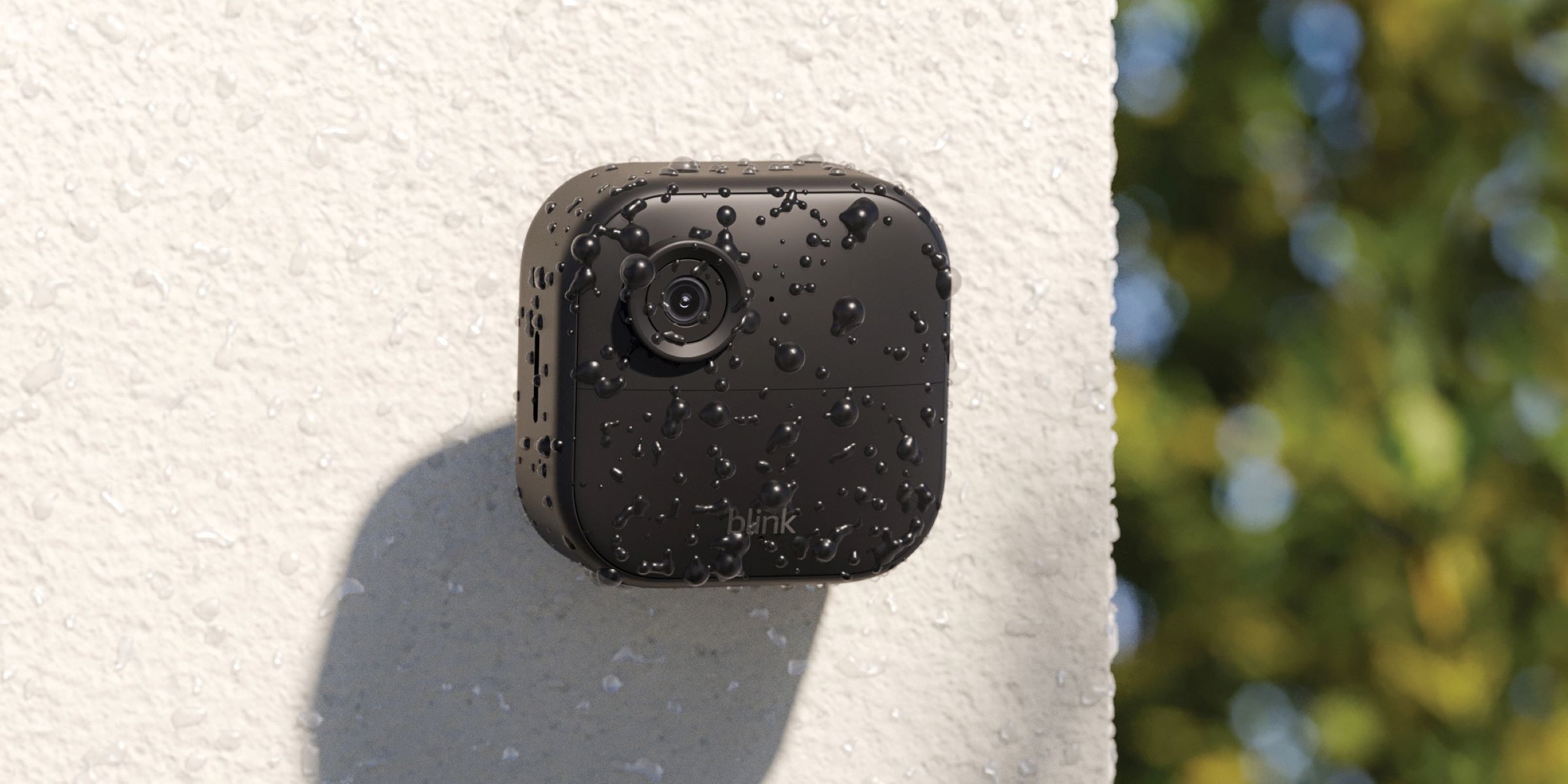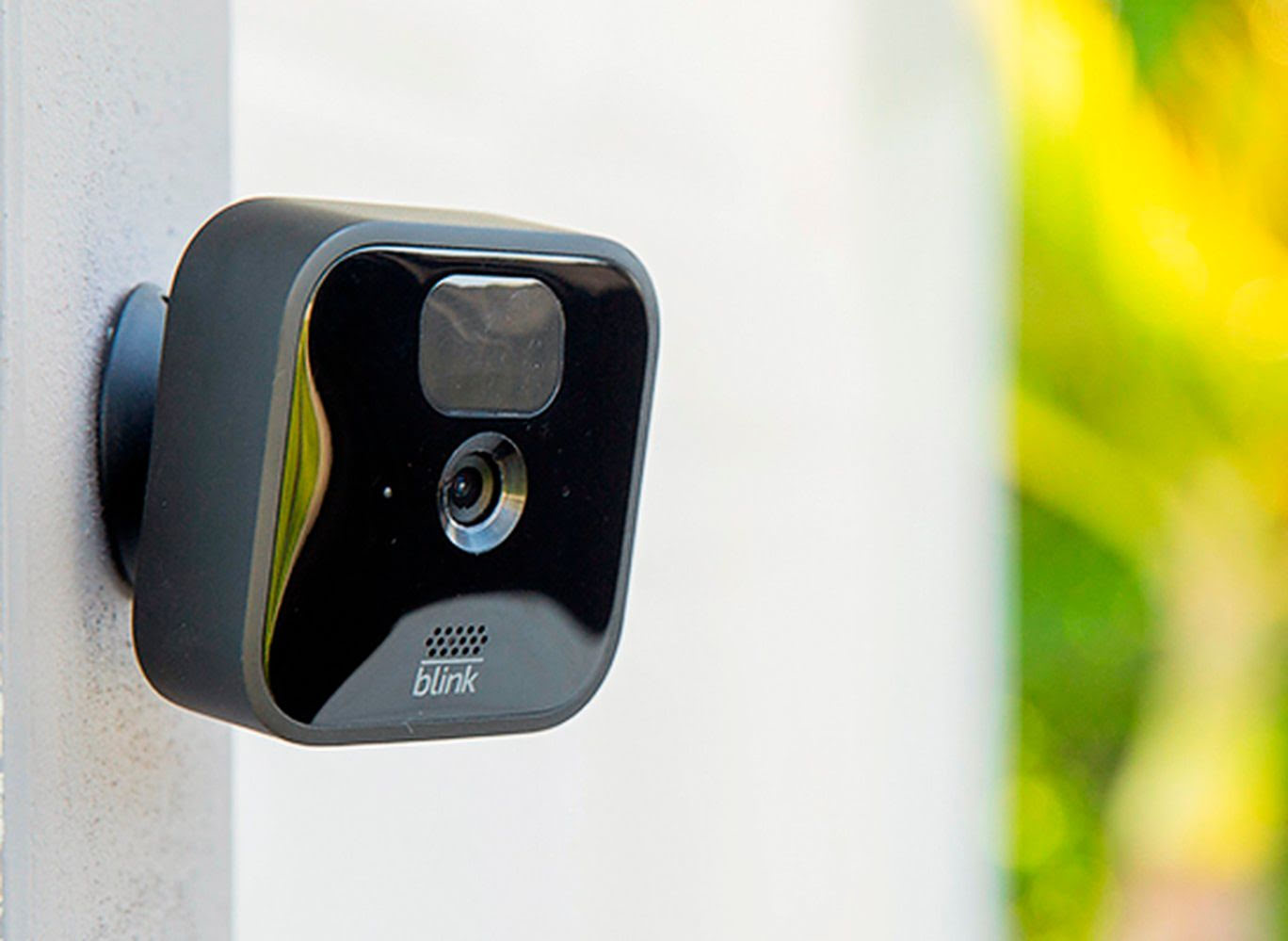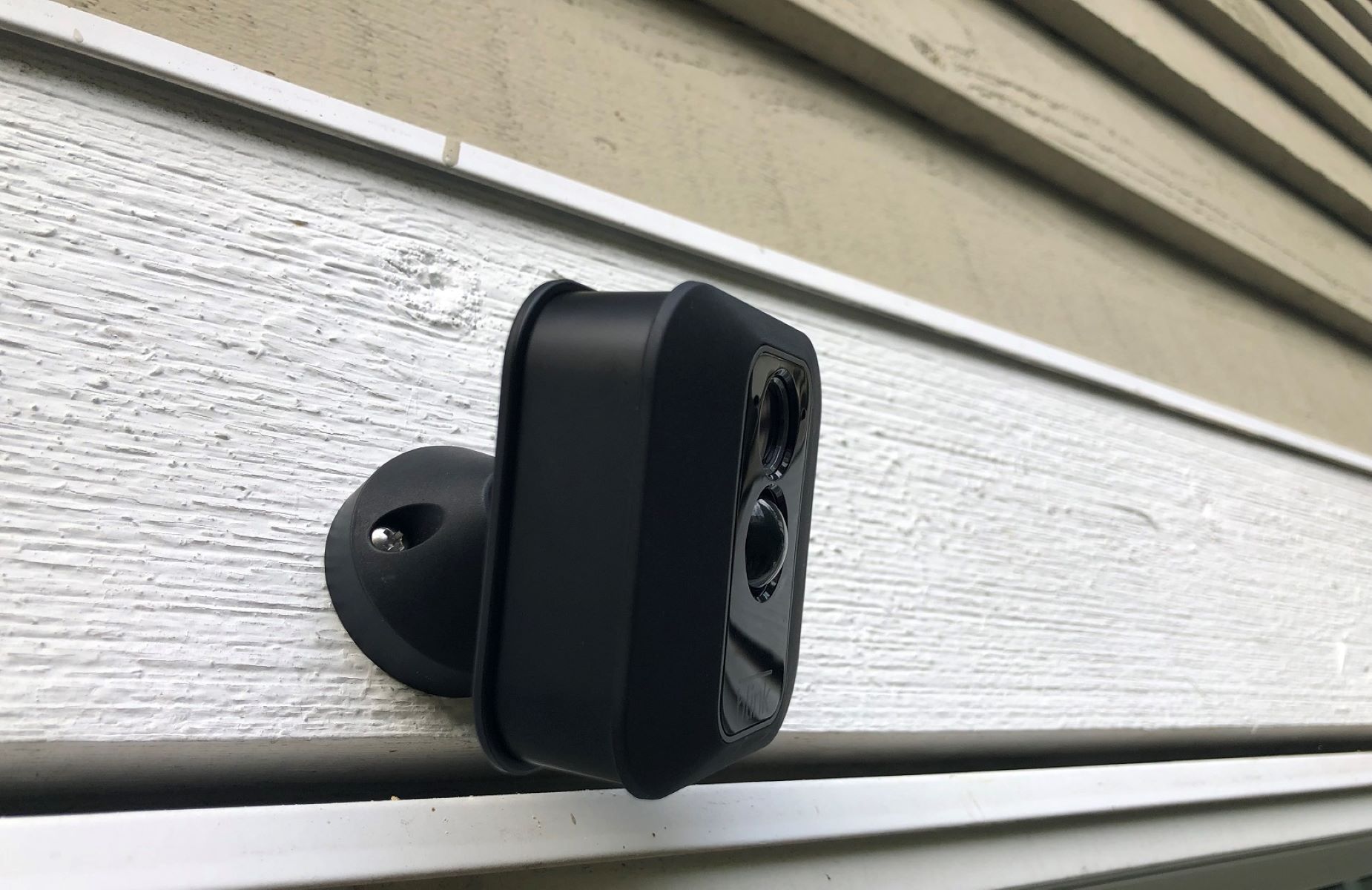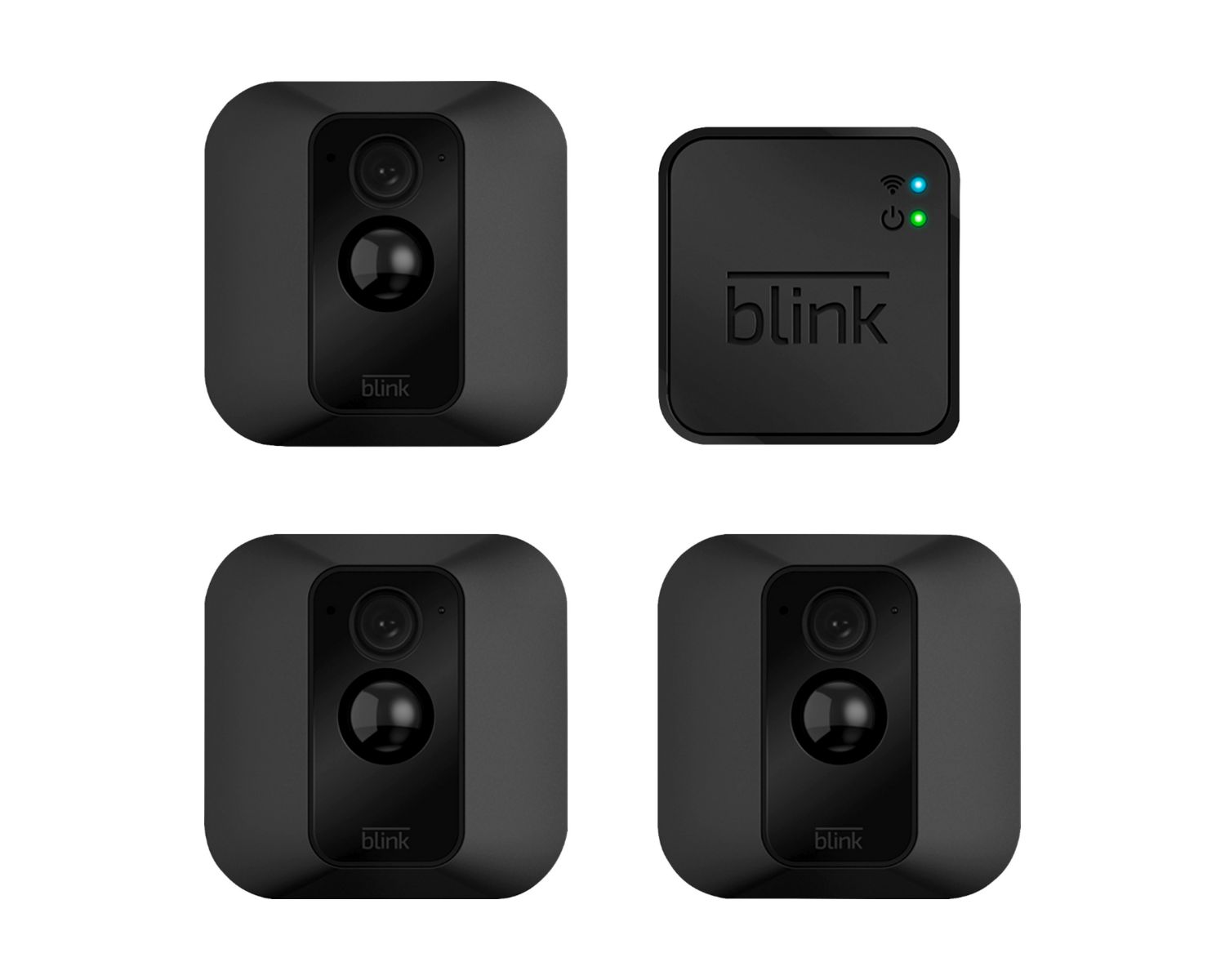Home>Home Security and Surveillance>What Type Of Batteries Do Blink Outdoor Cameras Use
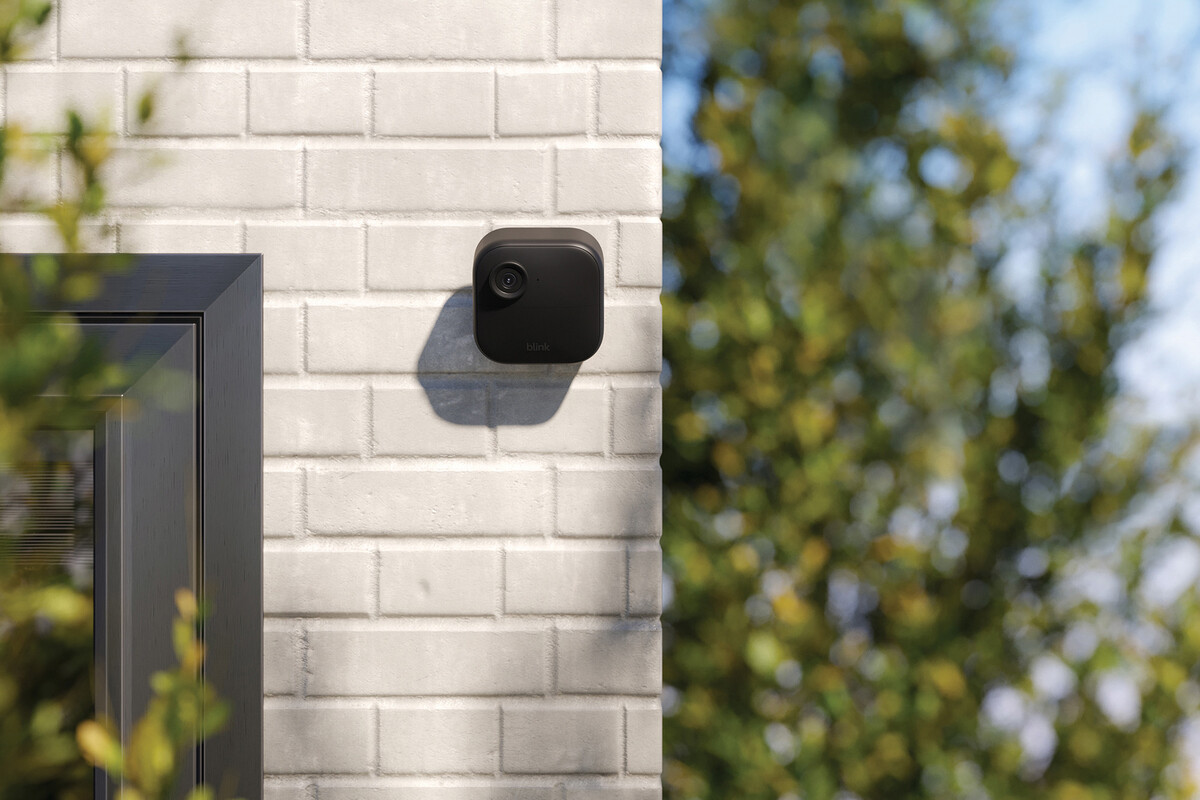

Home Security and Surveillance
What Type Of Batteries Do Blink Outdoor Cameras Use
Modified: October 19, 2024
Discover what type of batteries Blink Outdoor cameras use for your home security and surveillance needs.
(Many of the links in this article redirect to a specific reviewed product. Your purchase of these products through affiliate links helps to generate commission for Storables.com, at no extra cost. Learn more)
Introduction
Home security and surveillance have become increasingly important in today’s world. With the rise in crime rates and the need for peace of mind, many homeowners are turning to advanced home security systems to protect their property and loved ones.
One key component of a reliable home security system is outdoor cameras. These cameras play a crucial role in monitoring the exterior of your home and deterring potential intruders. Among the top outdoor camera brands, Blink is highly regarded for its innovative features and user-friendly design.
In this article, we will delve into the world of Blink outdoor cameras and explore the type of batteries they utilize. Understanding the importance of batteries and the different options available will help you make informed decisions when it comes to powering your Blink outdoor cameras effectively.
So, let’s get started and discover the world of Blink outdoor cameras and the batteries that keep them running smoothly.
Key Takeaways:
- Choose AA lithium batteries for Blink outdoor cameras for long-lasting power, high performance in extreme temperatures, and easy availability, ensuring reliable surveillance and peace of mind.
- Consider AA NiMH rechargeable batteries for cost-effective and environmentally friendly power, providing reusability and long-term savings while maintaining consistent performance for Blink outdoor cameras.
Overview of Blink Outdoor Cameras
Blink is a renowned brand that offers a range of smart home security cameras, including their impressive line of outdoor cameras. These cameras are designed to withstand the elements and provide round-the-clock surveillance of the exterior of your home.
Blink outdoor cameras come with various features that make them popular choices among homeowners. They offer HD video quality, motion detection capabilities, and two-way audio for communication. In addition, these cameras are wireless, which means they can be easily installed anywhere around your property without the hassle of extensive wiring.
One of the standout features of Blink outdoor cameras is their integration with mobile devices. Through the Blink app, you can access live video feeds and receive instant alerts on your smartphone or tablet, keeping you aware of any activity detected by the cameras.
With Blink outdoor cameras, you can keep an eye on your home even when you’re away, giving you peace of mind and the ability to respond swiftly to any potential security threats.
Now that we have a better understanding of the functionality and benefits of Blink outdoor cameras, let’s dive into the crucial aspect of their operation: the batteries that power them. Understanding the importance of batteries and the available options will help you make an informed decision when selecting the right power source for your Blink outdoor cameras.
Importance of Batteries in Blink Outdoor Cameras
When it comes to wireless outdoor cameras like the Blink range, batteries play a crucial role in their operation. Having reliable and long-lasting batteries is essential to ensure that your Blink outdoor cameras function optimally and provide continuous surveillance.
Here are some key reasons why batteries are important for Blink outdoor cameras:
1. Power Source: As wireless devices, Blink outdoor cameras rely entirely on batteries as their power source. Unlike wired cameras that can draw power from electrical outlets, these cameras need a steady supply of energy to operate effectively. Therefore, selecting the right batteries is vital for ensuring uninterrupted functioning.
2. Mobility and Flexibility: The wireless nature of Blink outdoor cameras allows for flexibility and easy installation. Whether you want to monitor the front porch, backyard, or driveway, you can position the cameras wherever you desire without being limited by electrical outlets. Moreover, with the right batteries, you can relocate the cameras without any hassle, providing you with the freedom to adjust your security setup as needed.
3. Continuous Surveillance: Home security cameras need to be operational around the clock to provide effective surveillance. With reliable batteries, your Blink outdoor cameras can continue recording and monitoring even during power outages, ensuring that no activity around your property goes unnoticed.
4. Quick and Responsive Alerts: Blink outdoor cameras are designed to send instant alerts to your mobile device when motion is detected. A dependable battery source ensures that the cameras remain powered and ready to send these notifications promptly. This allows you to respond swiftly to any potential security risks, whether it’s a package delivery, a trespasser, or any other suspicious activity.
5. Cost-Effective Solution: Opting for wireless cameras with efficient battery usage can be a cost-effective solution in the long run. While you may need to replace or recharge the batteries periodically, it eliminates the need for complex wiring and electrical installations. This can save you both time and money, especially if you’re installing multiple cameras around your property.
In summary, batteries are of utmost importance when it comes to powering Blink outdoor cameras. They provide the necessary energy for continuous surveillance, enable quick and responsive alerts, provide mobility and flexibility, and offer a cost-effective solution. With the right batteries, you can ensure that your Blink outdoor cameras operate efficiently and keep your home secure.
Battery Options for Blink Outdoor Cameras
When it comes to selecting the right batteries for your Blink outdoor cameras, you have several options to choose from. Each battery type offers different advantages and considerations. Let’s explore the three main battery options available:
1. AA Lithium Batteries:
AA lithium batteries are a popular choice for Blink outdoor cameras. They provide excellent performance and have a long shelf life. Lithium batteries have a higher energy density compared to other types, allowing them to last longer and provide consistent power to your cameras. They are also more resistant to extreme temperatures, making them suitable for outdoor use in various climates. Additionally, AA lithium batteries are lightweight and compact, making them easy to install and replace.
2. AA NiMH Rechargeable Batteries:
Another option for powering your Blink outdoor cameras is using AA NiMH rechargeable batteries. These batteries can be used repeatedly, reducing waste and overall operating costs. With the option to recharge them, you won’t need to constantly purchase new batteries. It is important to note that rechargeable batteries may have slightly shorter runtimes than non-rechargeable lithium batteries, so it’s essential to have a backup set on hand to ensure uninterrupted surveillance.
3. AA Alkaline Batteries:
AA alkaline batteries are a commonly available and affordable option for powering Blink outdoor cameras. They offer a decent runtime and can be easily found in stores. While they may not last as long as lithium batteries, they can still provide sufficient power for your cameras. It is important to consider that alkaline batteries may have a shorter lifespan in extreme temperatures, so they might require more frequent replacements in harsh weather conditions.
When choosing the battery type for your Blink outdoor cameras, it is essential to consider your specific needs and priorities. Factors such as budget, environmental impact, and convenience should be taken into account. Additionally, it’s a good practice to keep a spare set of batteries on hand to quickly replace drained ones and maintain continuous surveillance.
It is also important to note that Blink offers its own proprietary battery pack called the Blink Outdoor Battery Pack. This battery pack provides a hassle-free solution, designed specifically for Blink outdoor cameras. It is a rechargeable option that can be easily inserted into the camera to provide reliable and long-lasting power.
Ultimately, the choice of battery for your Blink outdoor cameras will depend on your preferences and requirements. Whether you opt for lithium batteries, rechargeable NiMH batteries, alkaline batteries, or the Blink Outdoor Battery Pack, ensuring that you have a reliable power source will help maximize the functionality of your Blink outdoor cameras and keep your home secure.
AA Lithium Batteries
AA lithium batteries are a popular and reliable option for powering Blink outdoor cameras. These batteries offer several advantages that make them a preferred choice for many homeowners. Here’s a closer look at the benefits of using AA lithium batteries:
1. Long Lifespan: AA lithium batteries have an impressive shelf life, lasting up to several years. This extended lifespan ensures that your Blink outdoor cameras will have a consistent and reliable power source for an extended period of time, minimizing the need for frequent battery replacements.
2. High Energy Density: One of the standout features of AA lithium batteries is their high energy density. This means that they can store and deliver a considerable amount of power, allowing your Blink outdoor cameras to operate efficiently. With high energy density, AA lithium batteries can provide a longer runtime compared to other battery types.
3. Performance in Extreme Temperatures: AA lithium batteries perform exceptionally well in extreme temperatures, making them ideal for outdoor use. Whether you live in a region with scorching summers or frigid winters, AA lithium batteries can continue to power your Blink outdoor cameras reliably. They are more resistant to temperature fluctuations compared to other battery options, retaining their performance even in challenging weather conditions.
4. Lightweight and Compact: AA lithium batteries are lightweight and compact, making them convenient for use in Blink outdoor cameras. Their small size allows for easy installation and replacement without adding unnecessary bulk or weight to the cameras. This is especially beneficial if you have multiple cameras installed around your property or if you need to relocate the cameras frequently.
5. Availability: AA lithium batteries are widely available in retail stores, making them easily accessible when you need to replenish your battery supply. You can find them in packs of various quantities, allowing you to stock up on batteries to ensure a continuous power source for your Blink outdoor cameras.
It is important to note that while AA lithium batteries offer excellent performance, they do come at a higher cost compared to other battery types. However, their longer lifespan and superior performance justify the investment for many homeowners.
When using AA lithium batteries in your Blink outdoor cameras, it’s recommended to keep a spare set on hand so that you can quickly replace drained batteries and avoid any interruptions in surveillance. Regularly checking the battery levels and monitoring the performance of your cameras will help ensure that your Blink outdoor cameras are always in optimal condition and ready to provide reliable security for your home.
Overall, AA lithium batteries are a top choice for powering Blink outdoor cameras. Their long lifespan, high energy density, performance in extreme temperatures, lightweight design, and availability make them a dependable option to keep your Blink outdoor cameras operating at their best.
Blink Outdoor cameras use two AA lithium batteries, which are long-lasting and reliable for outdoor use. Make sure to use lithium batteries for best performance.
AA NiMH Rechargeable Batteries
AA NiMH (Nickel-Metal Hydride) rechargeable batteries are a popular choice for powering Blink outdoor cameras. These batteries provide the convenience of reusability and offer several benefits that make them a favorable option. Let’s explore the advantages of using AA NiMH rechargeable batteries:
1. Reusability: One of the key advantages of AA NiMH rechargeable batteries is their ability to be charged and used multiple times. Unlike single-use batteries, these rechargeable batteries can be recharged hundreds of times, reducing waste and the need for constant replacement. This provides a cost-effective solution in the long run, as you won’t have to purchase new batteries frequently.
2. Environmentally Friendly: Opting for AA NiMH rechargeable batteries aligns with eco-friendly practices. By reducing the consumption and disposal of single-use batteries, you can minimize your environmental impact and contribute to sustainability efforts. Rechargeable batteries help minimize the overall waste generated from powering your Blink outdoor cameras.
3. Cost Savings: While AA NiMH rechargeable batteries may have a higher upfront cost compared to disposable batteries, they offer significant cost savings in the long term. By investing in rechargeable batteries, you eliminate the need for regular purchases of disposable batteries. Over time, this can result in substantial savings, especially if you have multiple Blink outdoor cameras requiring continuous power.
4. Backup Battery Set: AA NiMH rechargeable batteries allow you to have a backup set readily available. This is particularly beneficial if you need to replace drained batteries quickly to ensure uninterrupted surveillance. By having multiple sets of rechargeable batteries on hand, you can easily swap them out and keep your Blink outdoor cameras powered at all times.
5. Performance: AA NiMH rechargeable batteries provide a reliable power source for Blink outdoor cameras. While their runtime may be slightly shorter compared to non-rechargeable lithium batteries, they still offer sufficient power for continuous surveillance. For optimal performance, it is recommended to choose high-capacity NiMH batteries with a higher milliampere-hour (mAh) rating.
When using AA NiMH rechargeable batteries, it’s important to have a dedicated battery charger specifically designed for NiMH batteries. This charger will ensure proper charging and maximize the lifespan of your batteries. Additionally, it’s recommended to keep track of the battery levels and recharge them as needed to maintain consistent power for your Blink outdoor cameras.
In summary, AA NiMH rechargeable batteries offer the convenience of reusability, cost savings in the long run, and environmental benefits. They are a sustainable alternative to disposable batteries and provide a reliable power source for your Blink outdoor cameras. By investing in a backup set of rechargeable batteries and a designated charger, you can ensure uninterrupted surveillance and maintain the functionality of your Blink outdoor cameras.
AA Alkaline Batteries
AA alkaline batteries are a commonly available and affordable option for powering Blink outdoor cameras. These batteries offer simplicity and convenience while providing a reliable power source. Let’s explore the advantages and considerations of using AA alkaline batteries:
1. Wide Availability: AA alkaline batteries are widely available in retail stores, making it easy to find and purchase them when you need to replace drained batteries. Their widespread availability ensures that you can quickly obtain a fresh set of batteries without any hassle.
2. Cost-Effective Option: AA alkaline batteries are cost-effective and budget-friendly. They are generally more affordable compared to other battery types, making them an economical choice for homeowners. This is especially beneficial if you have multiple Blink outdoor cameras that require batteries, as it allows you to keep operating costs relatively low.
3. Decent Runtime: AA alkaline batteries typically provide a decent runtime, allowing your Blink outdoor cameras to function effectively for a reasonable amount of time before requiring replacement. While their lifespan may not be as long as lithium batteries, they can still power your cameras and provide continuous surveillance.
4. Backup Battery Set: It is always a good practice to have a backup set of batteries on hand, especially if you are using AA alkaline batteries. Being a disposable battery option, AA alkaline batteries eventually deplete their charge and need to be replaced. By having spare batteries readily available, you can quickly replace them and ensure uninterrupted power for your Blink outdoor cameras.
5. Temperature Considerations: It is important to note that AA alkaline batteries may have a slightly shorter lifespan in extreme temperature conditions. They may perform less efficiently in very hot or cold environments, resulting in a reduced overall runtime. If you live in an area with extreme weather conditions, you may need to monitor the battery levels more closely and anticipate more frequent replacements.
In summary, AA alkaline batteries offer a cost-effective and easily accessible option for powering Blink outdoor cameras. Their wide availability and affordability make them a practical choice, especially for homeowners who want a simple and straightforward power solution. While their runtime may not be as long as lithium batteries and extreme temperatures may affect their performance, AA alkaline batteries can still provide sufficient power for your Blink outdoor cameras, ensuring continuous surveillance.
Keep in mind that regularly monitoring the battery levels and having spare batteries available will help maintain uninterrupted power for your Blink outdoor cameras. By being proactive and prepared, you can optimize the performance of your cameras and keep your home secure.
Comparison of Battery Types
When selecting batteries for your Blink outdoor cameras, it’s important to consider the different options available. Let’s compare the three main battery types – AA lithium batteries, AA NiMH rechargeable batteries, and AA alkaline batteries – in terms of key factors:
1. Lifespan: AA lithium batteries have the longest lifespan among the three types. They can last several years, providing a consistent power source for your Blink outdoor cameras. AA NiMH rechargeable batteries can be used repeatedly, but they may have a slightly shorter lifespan compared to lithium batteries. AA alkaline batteries have a decent lifespan but may require more frequent replacements.
2. Performance: AA lithium batteries offer high energy density, providing longer runtimes and consistent power for your cameras. AA NiMH rechargeable batteries offer reliable performance but may have a slightly shorter runtime. AA alkaline batteries provide a decent runtime but may not last as long as lithium batteries in extreme temperatures or high-energy usage scenarios.
3. Environmentally Friendly: AA NiMH rechargeable batteries are the most environmentally friendly option as they can be recharged and reused, reducing waste. AA lithium batteries are disposable, but they have a long lifespan, minimizing the number of batteries that need to be disposed of. AA alkaline batteries are disposable and generate waste when depleted.
4. Cost: AA alkaline batteries are typically the most cost-effective option, providing an affordable power solution for your Blink outdoor cameras. AA lithium batteries are pricier compared to alkaline batteries but offer a longer lifespan. AA NiMH rechargeable batteries have a higher upfront cost but can save money in the long run as no frequent replacements are needed.
5. Temperature Resilience: AA lithium batteries perform well in extreme temperatures, making them suitable for outdoor use. AA NiMH rechargeable batteries may have a slightly reduced performance in extreme temperatures. AA alkaline batteries may have a shorter lifespan in extreme temperatures, requiring more frequent replacements.
Ultimately, the choice of battery type depends on your specific needs and priorities. AA lithium batteries are ideal for those seeking long lifespan and consistent performance. AA NiMH rechargeable batteries offer reusability and cost savings in the long term. AA alkaline batteries provide an affordable and easily accessible option, although they may require more frequent replacements.
Consider factors such as longevity, performance, environmental impact, cost, and temperature resilience when choosing the battery type for your Blink outdoor cameras. By making an informed decision based on your requirements, you can ensure that your cameras have a reliable power source and can perform optimally for your home security needs.
Factors to Consider when Choosing Batteries for Blink Outdoor Cameras
When selecting batteries for your Blink outdoor cameras, several factors should be taken into consideration to ensure optimal performance and reliable power. Here are some key factors to consider when choosing batteries for your Blink outdoor cameras:
1. Runtimes and Lifespan: Consider the expected runtime and lifespan of the batteries. AA lithium batteries typically offer the longest lifespan, providing consistent power over an extended period. AA NiMH rechargeable batteries can be a cost-effective option with slightly shorter runtimes. AA alkaline batteries offer decent runtimes but may require more frequent replacements.
2. Performance in Extreme Temperatures: Evaluate the temperature resilience of the batteries. AA lithium batteries perform well in extreme temperatures, making them suitable for outdoor use. AA NiMH rechargeable batteries may have reduced performance in extreme temperatures. AA alkaline batteries may have a shorter lifespan when exposed to extreme hot or cold conditions.
3. Cost-Effectiveness: Consider the upfront cost and long-term cost implications of the batteries. AA alkaline batteries are typically the most affordable option initially. AA lithium batteries may have a higher upfront cost but offer longer lifespans, reducing the frequency of replacements. AA NiMH rechargeable batteries have higher upfront costs but can save money in the long run due to reusability.
4. Compatibility: Ensure that the batteries you choose are compatible with your Blink outdoor cameras. Check the specifications provided by the manufacturer to determine which battery types are recommended and supported for use with your cameras.
5. Availability and Convenience: Consider the availability and convenience of the batteries. AA alkaline batteries are widely available in retail stores and can be easily purchased when needed. AA lithium batteries are also readily available but may have limited availability in certain regions. AA NiMH rechargeable batteries require a dedicated battery charger but offer the convenience of reusability.
6. Environmental Impact: Assess the environmental impact of the batteries. AA NiMH rechargeable batteries are the most environmentally friendly option as they can be recharged and reused, reducing waste. AA lithium batteries are disposable but have a long lifespan, minimizing the number of batteries that need to be discarded. AA alkaline batteries are disposable and generate waste when depleted.
7. Backup Batteries: Consider having a backup set of batteries available for quick replacements. This ensures uninterrupted power for your Blink outdoor cameras and continuous surveillance when the primary batteries need to be replaced or recharged.
By considering these factors, you can make an informed decision when choosing the batteries for your Blink outdoor cameras. It is recommended to check the manufacturer’s recommendations and specifications to ensure compatibility and optimal performance. Regular monitoring of battery levels and timely replacements or recharges will help maintain consistent power and reliable functioning of your Blink outdoor cameras for enhanced home security.
Conclusion
Choosing the right batteries for your Blink outdoor cameras is essential for ensuring reliable power and optimal performance. AA lithium batteries, AA NiMH rechargeable batteries, and AA alkaline batteries are the main options to consider. Each battery type has its own advantages and considerations.
AA lithium batteries offer a long lifespan, high energy density, and excellent performance in extreme temperatures. They are lightweight, compact, and widely available, making them a popular choice. However, they come at a higher cost.
AA NiMH rechargeable batteries provide reusability, cost-effectiveness, and environmental benefits. They may have a slightly shorter runtime and require a dedicated charger, but they offer long-term savings and reduced waste.
AA alkaline batteries are affordable, easily accessible, and provide a decent runtime. They are suitable for those on a budget but may require more frequent replacements, especially in extreme temperatures.
When choosing batteries for your Blink outdoor cameras, consider factors such as lifespan, performance, cost, temperature resilience, availability, compatibility, environmental impact, and the need for backup batteries. By carefully considering these factors, you can select the batteries that best meet your specific needs and priorities.
Whether you opt for AA lithium batteries for their longevity and performance, AA NiMH rechargeable batteries for their reusability and cost-effectiveness, or AA alkaline batteries for their affordability and convenience, always monitor battery levels and have backup batteries on hand to ensure uninterrupted power.
Remember, the batteries you choose will play a vital role in keeping your Blink outdoor cameras operational and your home secure. Prioritize reliability, longevity, and compatibility to ensure optimal performance and peace of mind knowing that your Blink outdoor cameras are powered by batteries that meet your needs.
Frequently Asked Questions about What Type Of Batteries Do Blink Outdoor Cameras Use
Was this page helpful?
At Storables.com, we guarantee accurate and reliable information. Our content, validated by Expert Board Contributors, is crafted following stringent Editorial Policies. We're committed to providing you with well-researched, expert-backed insights for all your informational needs.
